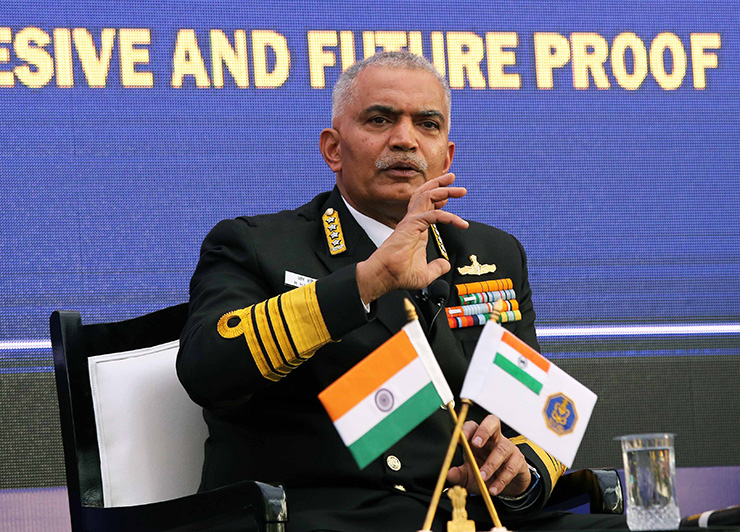
New Delhi: Chief of Naval Staff Admiral R Hari Kumar confirmed that India will soon buy the efficient 31 MQ-9B Predator Drones for the Indian Navy and Indian Air Force in order to advance India’s surveillance capability. “The Predator MQ-9B drone is used for surveillance…This is a very useful asset…The government has given its approval to buy it now. There is a plan to buy 31 Predator Drones,” said the Navy Chief.
The MQ-9Bs, which will be assembled in India, will enhance the Intelligence, Surveillance, and Reconnaissance (ISR) capabilities of India’s armed forces across domains. As part of this plan, General Atomics will also establish a Comprehensive Global Maintenance, Repair and Overhaul (MRO) facility in India in support of India’s long-term goals to boost indigenous defence capabilities.
According to a senior MoD official, India is negotiating to increase the indigenous content under the deal. “The current indigenous content proposed is 8-9% while India is hoping it can be increased up to 15-20%. Discussions are underway. General Atomics is positive to it and the US government has to accept it,” the official said. General Atomics is in talks with several Indian companies for domestic manufacture of components as part of the deal, officials said. This could expand further to potentially include the manufacture of some electronics, sensor and avionics if the indigenous content goes up.
The MQ-9B has two variants — the SkyGuardian and the SeaGuardian, its maritime variant. The MQ-9B is designed to fly over the horizon via satellite for up to 40 hours, depending on configuration, in all types of weather and safely integrate into civil airspace, according to its manufacturer. For instance, the SeaGuardian configuration can include a 360-degree surface-search maritime radar, automatic identification system, sonobuoy monitoring system, and sonobuoy dispensers for persistent anti-surface and anti-submarine warfare missions.
According to General Atomics, the MQ-9B can provide roughly 80% of the capability of a large human-flown maritime patrol aircraft at about 20% of its cost per hour. That makes it much more economical for navies to, for example, send out SeaGuardians to clear big volumes of air or sea and then, if anything of interest is discovered, vector in a human-crewed aircraft to save it the time, cost, and wear that it otherwise might have expended, the company stated. This is the primary reason the Indian Navy is keen on these UAVs as it significantly reduces the wear and tear on manned aircraft, its fleet of 12 P-8I long range maritime patrol aircraft, as well as reduce crew fatigue in keeping an eye over the wide expanse of the Indian Ocean Region and beyond.
For the Army and Air Force, the MQ-9Bs can provide round-the-clock surveillance looking far beyond the borders, for instance on the movement of Chinese military build-up and troop movement along the Line of Actual Control (LAC) and deep inside. It also seamlessly integrates with other US-origin platforms that India operates, the P-8Is, AH-64 Apache attack helicopters, MH-60R multi-role helicopters among others expanding MQ-9B’s multi-domain mission set.









